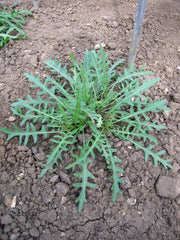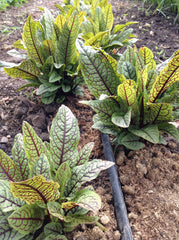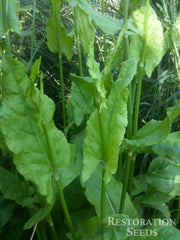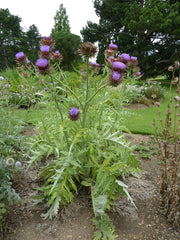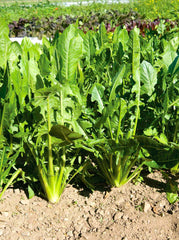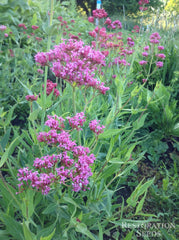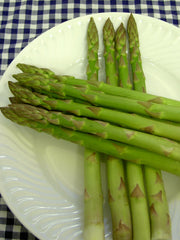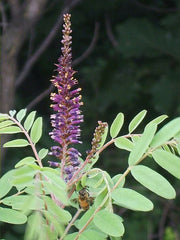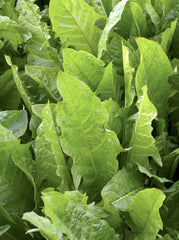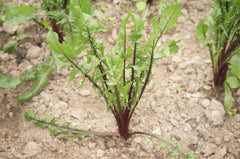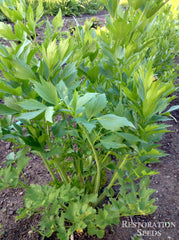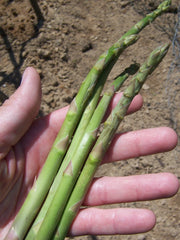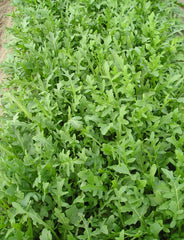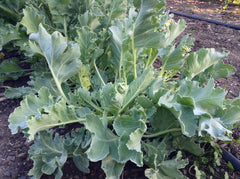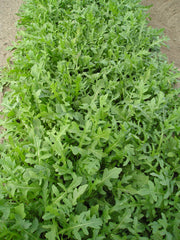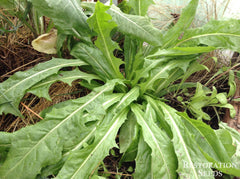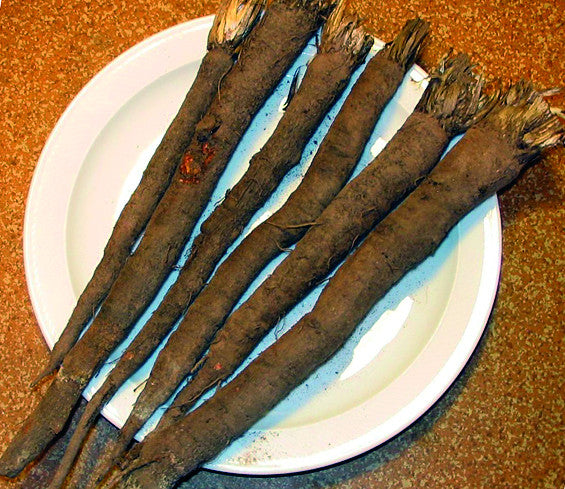Duplex black salsify
Scorzonera hispanica
HOW TO GROW BLACK SALSIFY
Direct sow in early spring in shallow furrows two weeks before last frost, thin to 4”. In regions without frost they can be sown in autumn or from February on. Do not transplant. Prefers a deep loose well drained soil free of stones and gravel. Roots can grow to 3’ and 3/4” in diameter. Harvest carefully, roots are fragile and broken material loses freshness. Typically a winter vegetable preferring average temps of 55–75˚F. Does not thrive well in hot weather, will also grow in light shade. Dig roots from November through March. Roots will keep fresh all winter if stored in a cool dark place or root cellar, due to their robust black corky skin. Germination varies. Self sows freely. Soil pH 6.1–7.8. Hardiness zones 6–7. Perennial.
Federal germination standard: 75%. Usual seed life: 2 years. Isolation distance for seed saving: 1/2 mile.
Planting Depth 1/2"
Soil Temp. Germ. 50–70˚F
Days to Germ. 10–20
Plant Spacing 4–6”
Row Spacing 18–24”
Days To Maturity 1–2 years
Full Sun, Moist Well Drained Soil
Federal germination standard: 75%. Usual seed life: 2 years. Isolation distance for seed saving: 1/2 mile.
Planting Depth 1/2"
Soil Temp. Germ. 50–70˚F
Days to Germ. 10–20
Plant Spacing 4–6”
Row Spacing 18–24”
Days To Maturity 1–2 years
Full Sun, Moist Well Drained Soil
- 100 Seeds$4.70
Uniform heavy yielding variety, widely grown in Continental Europe. A heritage vegetable with dark skinned white roots 20-30 cm long. Scorzonera is a hardy root vegetable, easy to grow and untroubled by too many pests and diseases, so worth consideration. Roots have a sweet agreeable flavor used in soups or mashed. ...
Uniform heavy yielding variety, widely grown in Continental Europe. A heritage vegetable with dark skinned white roots 20-30 cm long. Scorzonera is a hardy root vegetable, easy to grow and untroubled by too many pests and diseases, so worth consideration. Roots have a sweet agreeable flavor used in soups or mashed. Roasted roots are a coffee substitute. Young tender shoots are eaten in early spring, flower buds are added to salads. Contains proteins, potassium, calcium, iron and vitamins A, B1, E and C. It also contains the glycoside inulin, conferring a mild sweetness that is suitable for diabetics. Peal the thick black skin after boiling the root for 20 to 25 minutes. Black salsify is often eaten together with other vegetables, such as peas and carrots. But it is also popular served like asparagus in a white sauce, such as bechamel sauce or mustard sauce. Boiled salsify roots may also be coated with batter and deep fried.
The leaves of black salsify are spearhead shaped and have an excellent mild flavor improved by frost. They last past mild freezes and re-grow quickly after hard ones. They taste very much like lettuce. Come spring, they produce copius quantities of large, mild-flavored leaves long before lettuce can be planted. Late rin the summer when they bolt, your lettuce will be available. Also known as Scorzonera, Black Vegetable-oyster Plant, Serpent Root and Viper's Grass. Tags: Season: Spring Fall Winter, Seed: Safe Seed Pledge.
Black salsify is native to Southern Europe and the Near East. It is generally thought to have spread to the rest of Europe from Spain, but the first mention of the vegetable by a Western writer came from Leonhard Rudolf, who reported seeing scorzonera at the market of Aleppo in Syria, in 1575. Although it is often claimed that the name of the genus Scorzonera probably derives from the Old French word scorzon, meaning snake, it is more likely that the name is derived from the Italian "scorza negra" meaning "black bark"/"black peel" and obviously indicating the dark brown to black skin of the root. Black salsify is hitherto mainly a European crop. Belgium, France and the Netherlands are the world's largest producers of black salsify. Significant amounts are also produced in Germany. In the latter country, 'Hoffmanns Schwarzer Pfahl' is a cultivar widely used by commercial growers, while 'Duplex' is popular among small-scale gardeners.
The leaves of black salsify are spearhead shaped and have an excellent mild flavor improved by frost. They last past mild freezes and re-grow quickly after hard ones. They taste very much like lettuce. Come spring, they produce copius quantities of large, mild-flavored leaves long before lettuce can be planted. Late rin the summer when they bolt, your lettuce will be available. Also known as Scorzonera, Black Vegetable-oyster Plant, Serpent Root and Viper's Grass. Tags: Season: Spring Fall Winter, Seed: Safe Seed Pledge.
Black salsify is native to Southern Europe and the Near East. It is generally thought to have spread to the rest of Europe from Spain, but the first mention of the vegetable by a Western writer came from Leonhard Rudolf, who reported seeing scorzonera at the market of Aleppo in Syria, in 1575. Although it is often claimed that the name of the genus Scorzonera probably derives from the Old French word scorzon, meaning snake, it is more likely that the name is derived from the Italian "scorza negra" meaning "black bark"/"black peel" and obviously indicating the dark brown to black skin of the root. Black salsify is hitherto mainly a European crop. Belgium, France and the Netherlands are the world's largest producers of black salsify. Significant amounts are also produced in Germany. In the latter country, 'Hoffmanns Schwarzer Pfahl' is a cultivar widely used by commercial growers, while 'Duplex' is popular among small-scale gardeners.
Learn More
Reviews
